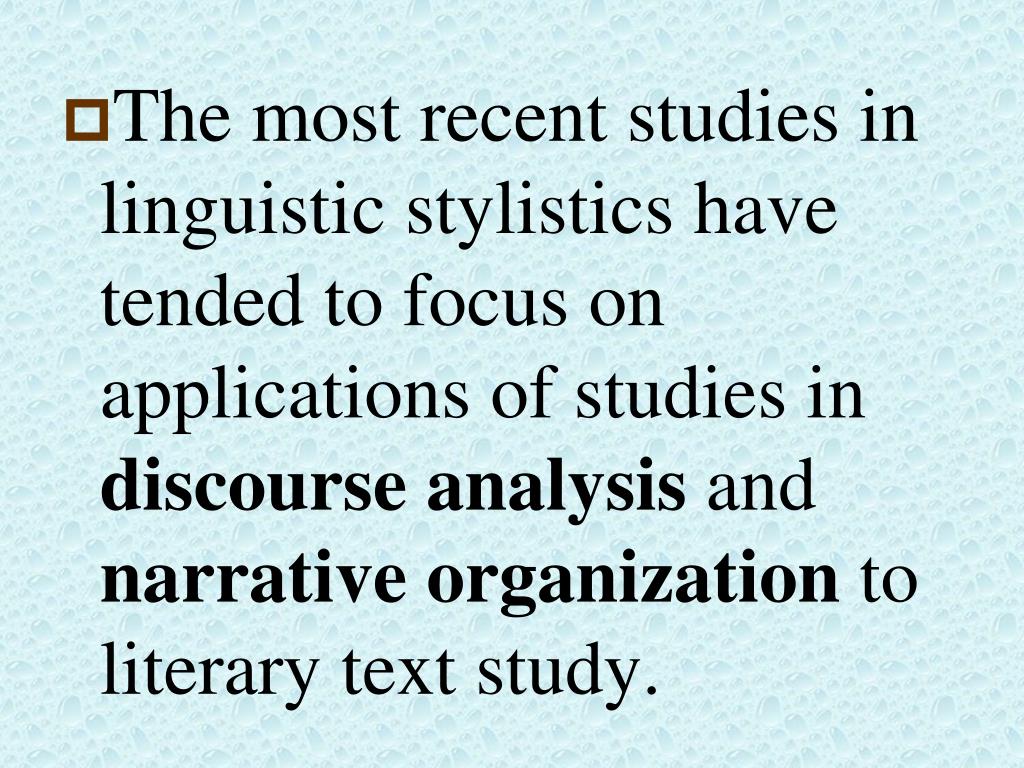



Whatever the limits of previous approaches to style, or the difficulties that have arisen from the practical application of linguistic methods to stylistic analysis, the desire to begin with a set of well-defined terms and procedures lies at the core of the initial formation of stylistics as a discipline. In both cases, the use of linguistic methodology has allowed stylistics to move beyond earlier normative and prescriptive descriptions of “correct” styles to a fuller analysis of language itself and the purposes to which language regularly is put. Modern stylistics, in general, draws much of its analytical power from the analytical methods and descriptive intentions of linguistics, while modern literary stylistics, in particular, draws upon that area and adds to it the interpretive goals of modern literary criticism. The appearance of stylistics as a semiautonomous discipline is a modern phenomenon, an ongoing development in linguistic description that is closely tied to the similar rise of literary criticism and linguistics as academic subjects and departments. But most pre-twentieth-century discussions appear as secondary components of rhetorical and grammatical analyses or in general studies of literature and literary language. Treatises devoted to the study of style can be found as early as Demetrius’s On Style (C.E.


 0 kommentar(er)
0 kommentar(er)
